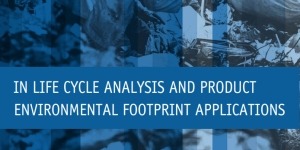 Bremen, 22 January 2025: Microplastics are ubiquitous and evidence of serious harm is increasing. Studies have linked microplastics and nanoplastics to heart attacks, strokes and deaths, and microplastics have been found in the bone marrow of leukaemia patients and in the brains of dementia patients.
Bremen, 22 January 2025: Microplastics are ubiquitous and evidence of serious harm is increasing. Studies have linked microplastics and nanoplastics to heart attacks, strokes and deaths, and microplastics have been found in the bone marrow of leukaemia patients and in the brains of dementia patients.
Analyst Veronica Bates Kassatly and statistician Dr. Terry Townsend have compiled a report on microplastics, which is now published by the Bremen Cotton Exchange.
Chemicals associated with synthetic textile polymers are a key aspect of concern. Some 2,566 chemicals are either marketed for use in Polyethylenterephthalat (PET), are present in PET, or are released from PET. Only 31 of these are known to be not hazardous, 31 % are known to be hazardous, but the vast majority have no hazard data. PET is the most common thermoplastic polymer resin of the Polyester family and is used in fibres for clothing, containers for liquids and foods, and thermoforming for manufacturing.
Accordingly, plastic microfibres are a completely different hazard category from other microfibres and must be treated as such in Life Cycle Assessments (LCAs) and Product Environmental Footprints (PEFs). Recognising this fundamental difference, the European Commission’s March 2024 resolution on the Green Claims Directive specified that the PEF for apparel and footwear must include an assessment of microplastics.
In their 31-page report on the treatment of microplastics in LCAs and PEF applications, Veronica Bates Kassatly and Terry Townsend recommend that, in the same way that tobacco packaging is required to carry a health warning, a warning on point-of-sale packaging would be appropriate for all products containing synthetic fibres.
Link to: Bremen Cotton Exchange > Danger warning about microplastics
Download document: The Treatment of Microfibers
Related Posts

